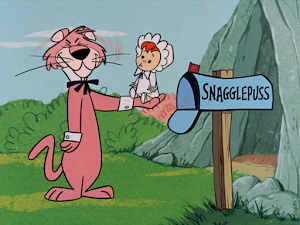What’s with that Ranger Smith? He’s happy one week and angry the next. Maybe it’s from being cooped up in the woods for so long. Oh, well. We get the two sides of Mr. Ranger in the Sunday Yogi Bear newspaper comics from 50 years ago this month. He appears in three out of four of them. Yogi also shows why he’s “smarter than the average bear” with some ingenuity.
As usual, I urge you to go to Mark Kausler’s web site where he’ll have two-row versions (and maybe three) in full colour from his personal collection.
![]()
Guest appearances are always fun, and the writer works them into the November 7th comic, where Huckleberry Hound, Quick Draw McGraw and Baba Looey show up for a game of baseball. The artist gives us various depth levels in a number of the panels and solid poses on Yogi. The effect lettering in the last row is nice, too.
![]()
Yeah, Yogi, if I were you, I’d get fed up with Ranger Smith’s foul moods, too. He’s so angry he doesn’t even rhyme in the November 14th comic (see the burn drawing, last panel, second row). A Yogi heel click again this month. Notice how the artist has some white space in the final panel to make the rope attached to the water tower more visible.
![]()
Mr. Ranger’s in a good mood in the top row of the November 21st comic. Observe the squirrel in the upper left corner of the first row and the rabbit next to Yogi. The rabbit has a more modern, stylised design, kind of like the White Rabbit in the 1966 Alice Hanna-Barbera special. Our favourite bear uses his inventiveness to save the dance for Peg, Mrs. Vicki Ranger and another young lady.
![]()
While the “reveal” gag at the end of the November 28th comic is good, my favourite is the throwaway in the first panel where the rabbit feeds Yogi’s worm bait to a bird. It’s a good thing the letters on that sign are made of something that floats. Boo Boo’s in all four comics this month. Where’s the grouchy Ranger Smith when the canoeist’s life needs saving? I don’t get the line in the middle row, second panel. Why is the canoeist in “double trouble”? Or is the writer stretching for a rhyme?
Next month, Yogi meets up with a crook, modern art, beavers, a rhyming “general” and snow (Shouldn’t he be hibernating? Oh. There’d be no comics if he were).
As usual, I urge you to go to Mark Kausler’s web site where he’ll have two-row versions (and maybe three) in full colour from his personal collection.

Guest appearances are always fun, and the writer works them into the November 7th comic, where Huckleberry Hound, Quick Draw McGraw and Baba Looey show up for a game of baseball. The artist gives us various depth levels in a number of the panels and solid poses on Yogi. The effect lettering in the last row is nice, too.

Yeah, Yogi, if I were you, I’d get fed up with Ranger Smith’s foul moods, too. He’s so angry he doesn’t even rhyme in the November 14th comic (see the burn drawing, last panel, second row). A Yogi heel click again this month. Notice how the artist has some white space in the final panel to make the rope attached to the water tower more visible.

Mr. Ranger’s in a good mood in the top row of the November 21st comic. Observe the squirrel in the upper left corner of the first row and the rabbit next to Yogi. The rabbit has a more modern, stylised design, kind of like the White Rabbit in the 1966 Alice Hanna-Barbera special. Our favourite bear uses his inventiveness to save the dance for Peg, Mrs. Vicki Ranger and another young lady.

While the “reveal” gag at the end of the November 28th comic is good, my favourite is the throwaway in the first panel where the rabbit feeds Yogi’s worm bait to a bird. It’s a good thing the letters on that sign are made of something that floats. Boo Boo’s in all four comics this month. Where’s the grouchy Ranger Smith when the canoeist’s life needs saving? I don’t get the line in the middle row, second panel. Why is the canoeist in “double trouble”? Or is the writer stretching for a rhyme?
Next month, Yogi meets up with a crook, modern art, beavers, a rhyming “general” and snow (Shouldn’t he be hibernating? Oh. There’d be no comics if he were).






























































































































































































